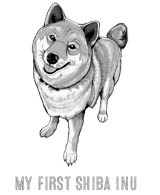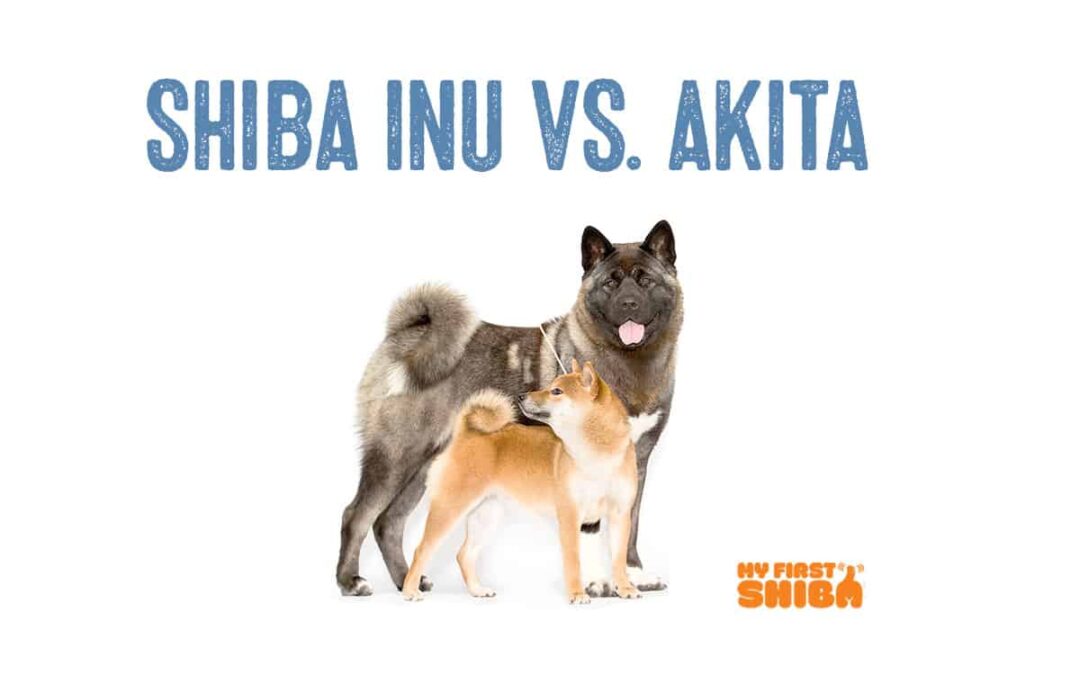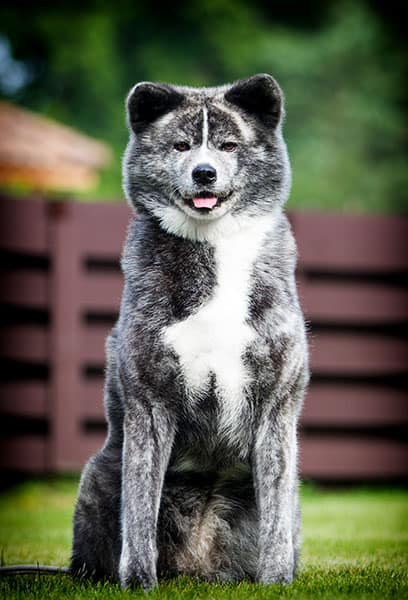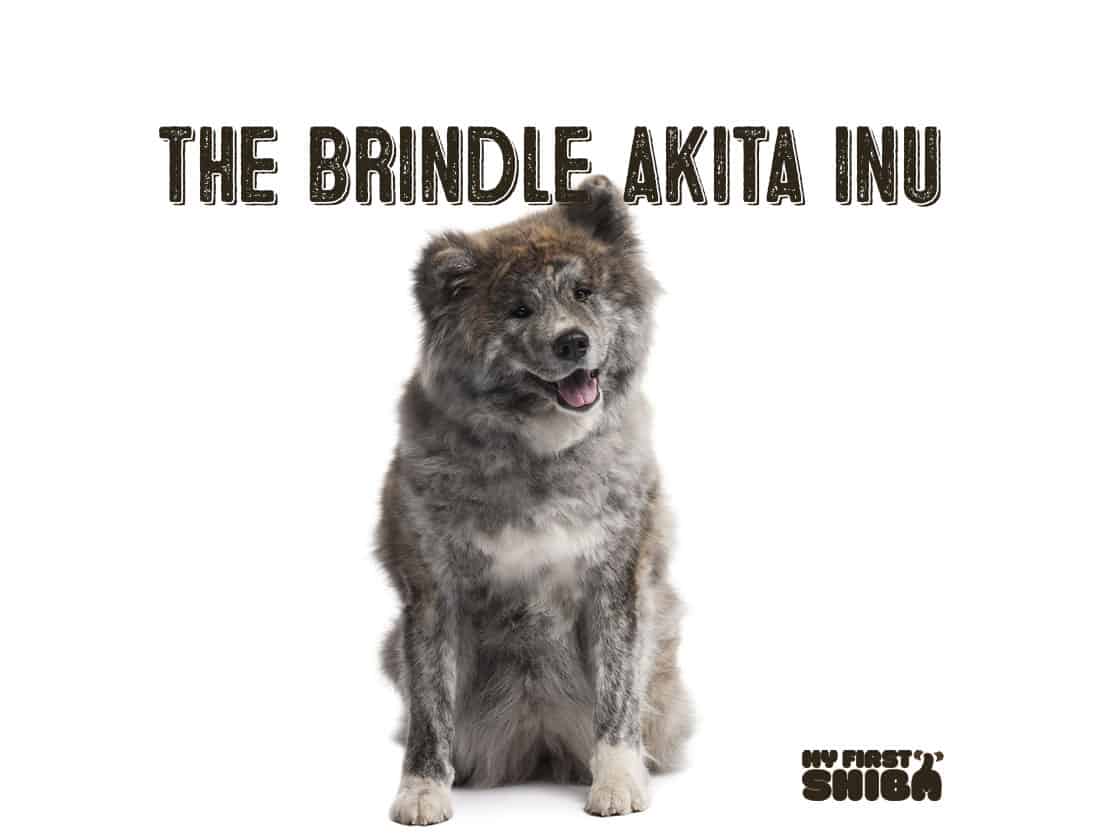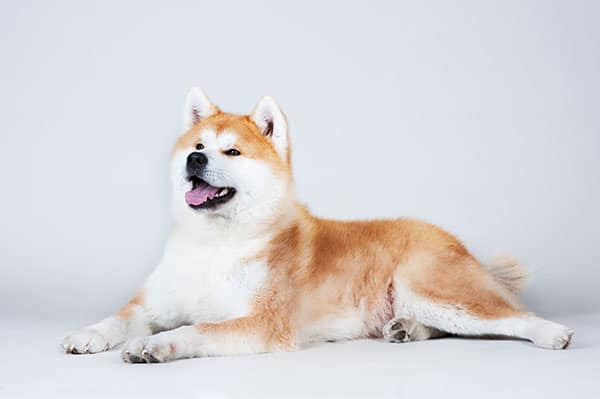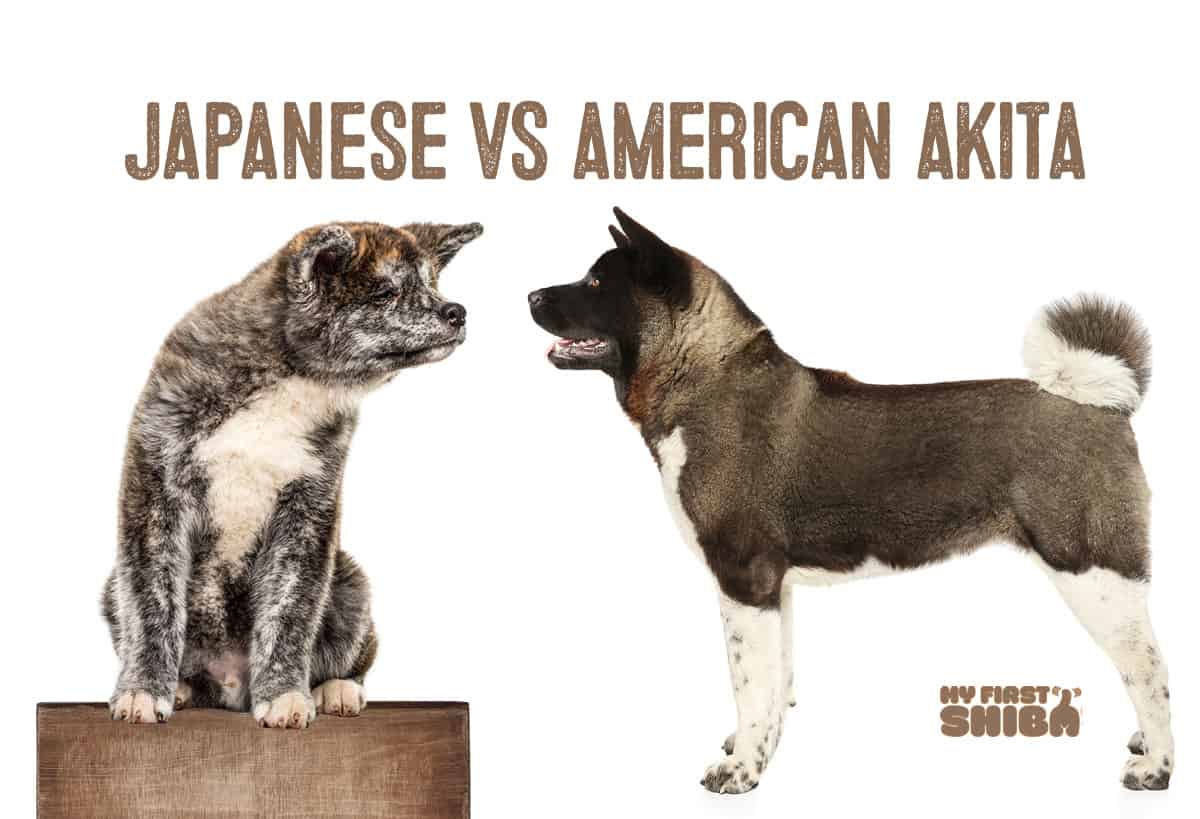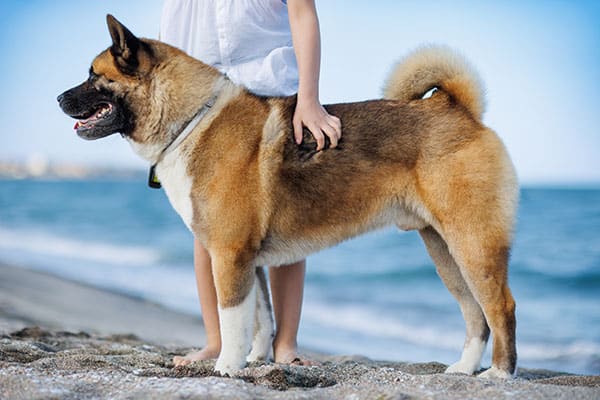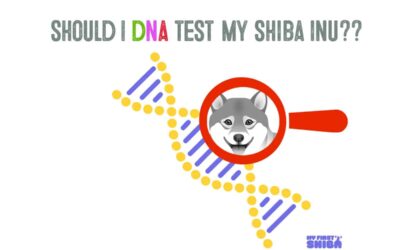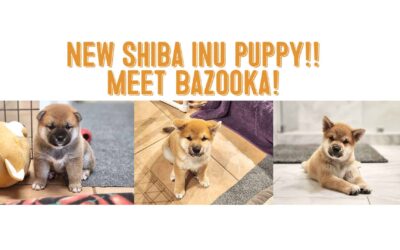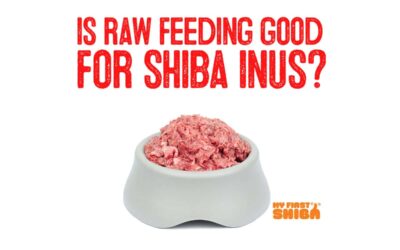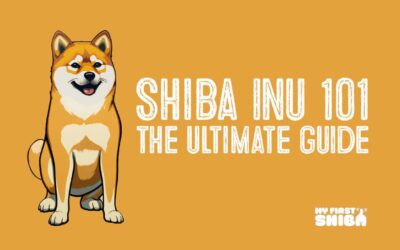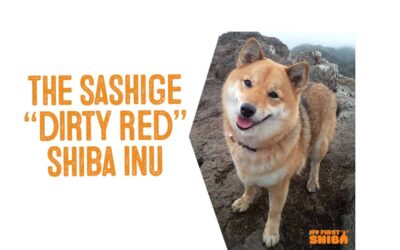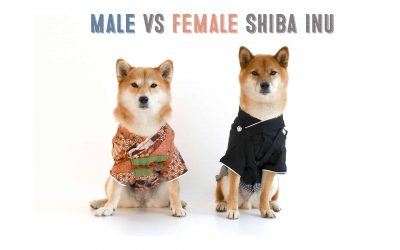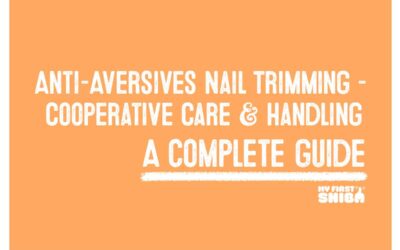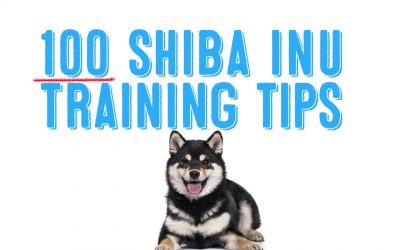The Shiba Inu and Akita Inu are one of the six native dog breeds of Japan.
And while there are quite a bit of similarities between the two – there are also big, even massive differences!
With DNA studies indicating that these two breeds are among the most ancient domesticated dogs, their Japanese history is fascinating.
Archaeologists have discovered 9,500-year-old skeletal dog remains in Japan, and evidence of their companionship and hunting activities with humans dates back as long as 12,000 years.
You may have heard that there are two types of Akitas – the original Japanese Akita and the American Akita.
For simplicity sake, this article will be referring to the Japanese Akita Inu.
In brief, the American Akita Inu is a Japanese Akita Inu that was brought to America and bred with various breeds like the German Shepherd to produce and Akita that American breeders wante
If you’re thinking about the possibility of owning either a Shiba or an Akita, read on to learn how these two cool canines stack up against each other.
Shiba Inu Vs. Akita – Size
By far, the biggest difference between these two Japanese breeds is size!
An Akita Inu is a massive dog that can weigh as much as a hundred pounds or more.
Now that’s a lot of dog to consider!
On the other hand, a standard Shiba Inu is usually 30 pounds or less.
This means that Akita Inus are only well suited to dog owners that understand how to care for such a large dog.
Large dogs need a lot of room and a whole lot of food.
Shiba Inus are small, medium, compact dogs that can do well in a variety of living environments including apartments
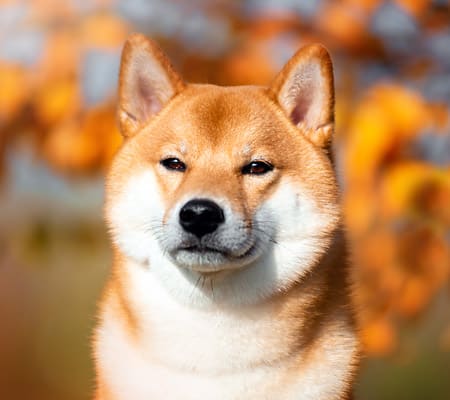
Towards the end of the nineteenth century, the Shiba and Akita were imported throughout the world.
The Shiba Inu is the national dog of Japan and remains popular in the Island nation.
The Akita Inu on the other hand is less common due to the Akita’s imposing size and space needs – something many Japanese residents lack.
Shiba Inu: Small but Mighty
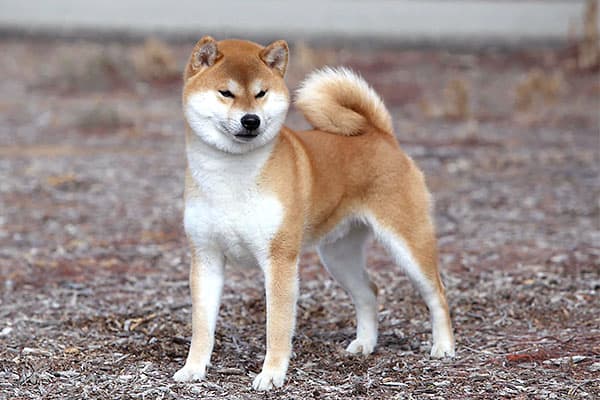
Beautiful red Shiba Inu from Nippo Hauoli Shiba
The Shiba is a bright, active, bold little dog with a sturdy, compact size and impressive athletic ability.
However, they still require regular walks, space to run and human companionship / interactive playtime.
Shibas have plush coats that are either red, black-and-tan, sesame, and cream.
Their historic prowess as hunters is clearly illustrated when chasing squirrels, cats or other small critters. Shibas can be a challenging companion pet as their inquisitive, independent nature may test the boundaries of your patience.
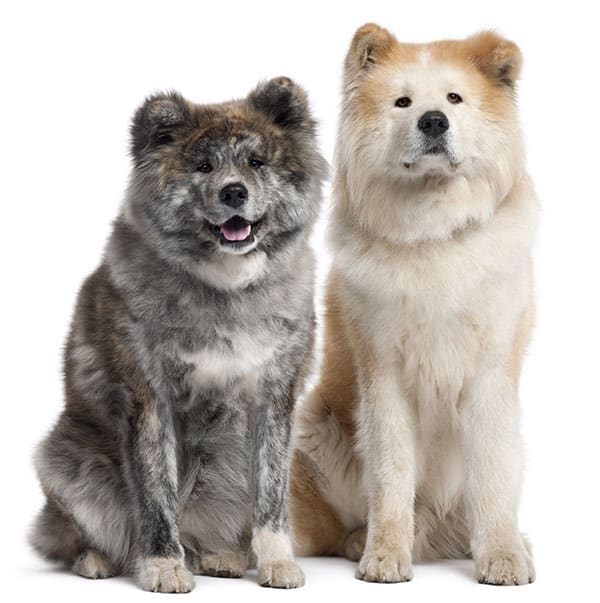
Brindle and Red Shiba Inu
Akita Inu: Magnificent and Imposing
The Akita Inu shares many of the same appearance and personality characteristics with the Shiba Inu; however, they possess a much larger body.
Weighing in between 70 and 130 pounds, these large, muscular dogs have an impressive appearance, and their thick hair coat in colors such as brindle, white and black makes them look even larger than they are.
Akitas are generally considered to be a confident, protective and aloof.
This urge to protect their families can sometimes translate to aggression. Akita Inus are not dogs for everyone as they need an experienced handler.
Their independent, aloof temperaments can mean they are wary of people, and their fearsome size can make growling and barking a frightening thing to witness.
Shiba Inu Vs. Akita – Temperament
In terms of temperament and personality, Shibas and Akitas share many similarities.
Both Shibas and Akitas are somewhat aloof dogs with a highly independent nature.
Wary of strangers, both Akitas and Shibas usually prefer the company of their family versus mingling with strangers at a dog park.
The Shiba Inu is the more headstrong of the two which is not surprising as Shibas are well known for their “Diva” like behavior.
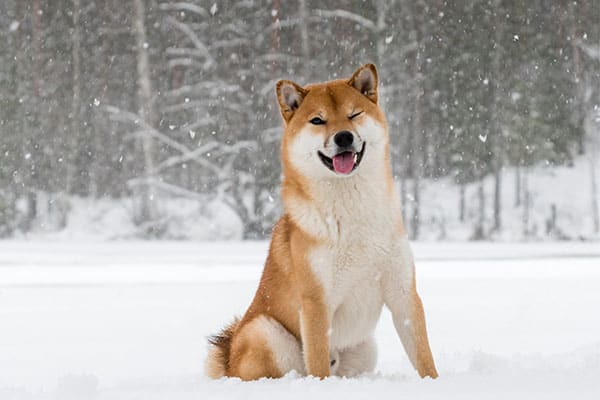
Gorgeous red Shiba Inu in the snow
Akita Inus are the lazier of the two and prefer to live a life of relative relaxation and calm.
Shibas are much more energetic and curious which makes them great hiking buddies.
Both Shiba Inus and Akita Inus can sometimes exhibit aggressive behaviors. These aggressive behaviors are magnified with the Akita due to the Akita’s massive size. However a very aggressive Shiba Inu can also be dangerous and would likely need the help of a canine behavior therapist.
This is the reason Akita Inus should only be owned by experienced owners who understand the breed well.
Many localities have laws banning Akita Inus due to this aggression risk.
Shiba Inu Vs. Akita – Looks
Aside from the large in difference in size – Shiba Inus and Akita Inu look very similar, face and body-wise.
In an AKC article on the differences between Akita and Shibas, past national club president of the national Shiba club in America Lori Pendergast describes Shibas and Akitas having the same body structure, profile, and coat type (double-coated with urajiro).
The large head of an Akita sometimes makes the Akita look a bit clownish or a bit like a goofier Shiba. This is not a criticism – just a fact – and besides, large goofy faces are quite adorable.
The difference in looks between Shiba and Akita also depends on whether the Akita is an American Akita or a Japanese Akita.
The Japanese Akita is typically red or white while American Akitas are usually brindle or have darker colors. This was caused when American Akitas were crossbred to “transitional large Akita-type dogs” in America.
Shiba Inus have notoriously good looks – with a foxy face and wry smile to capture anyone’s attention.
Shibas have a compact and balanced body structure and comes in a variety of coal colors including red, black and tan, sesame, and cream.
Shiba Inu Vs. Akita – Health and Longevity
In general the Shiba Inu is the healthier of two breeds and does have a longer life span.
Larger dogs like Akitas generally have shorter lifespans than their smaller canine counterparts.
Shiba Inus are a healthy breed in general and do not have many serious health issues aside from certain eye issues like glaucoma, and hip issues (hip dysplasia)
Akita Inus are at risk for more serious health issues such as:
- Autoimmune hypothyroidism
- Progressive Retinal Atrophy (PRA)
- Uveodermatologic Syndrome
- Acquired myasthenia gravis
- Von Willebrand disease
- Immune system skin disorders such as pemphigus foliaceous, zinc deficiencies, uveodermatologic syndrome/VKH and sebaceous adenitis
- Bloat
Shiba Vs. Akita – Additional Similarities
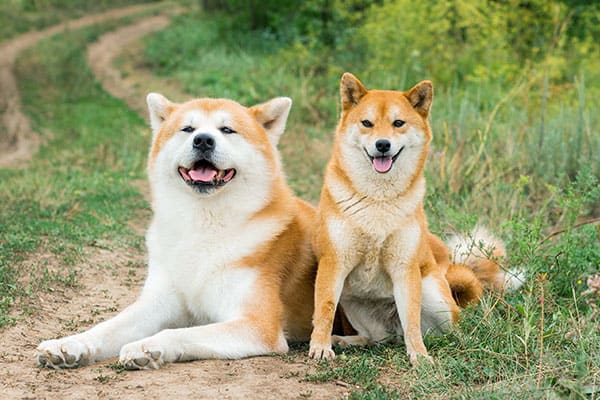
Japanese Akita Inu and Shiba Inu
The Akita and Shiba Inu are often described as “catlike.” – with the Shiba exhibiting this trait more.
They tend to think independently, separate themselves from social groups and groom themselves like a feline.
However, they both may not be the best companions for cats as their predatory instinct to hunt and chase small animals is very strong.
As family companions, both Shibas and Akitas are loyal and devoted family members.
However due to their aloof nature, they may not be the best at “showing” this devotion.
Both breeds are generally unreliable off leash, as their independent nature and interest in small prey makes them likely to wander off and ignore obedience cues.
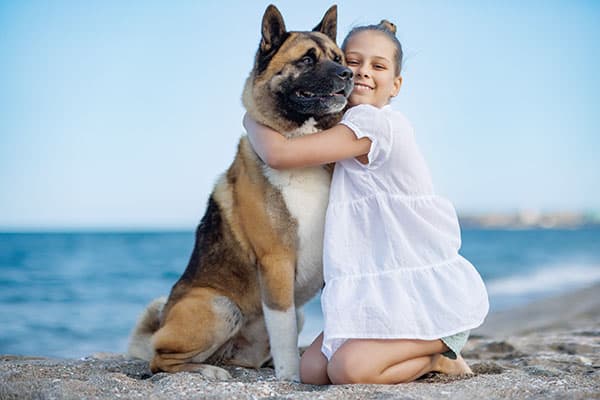
In Summary
For first time dog owners, a Shiba Inu is already enough of a challenge.
Getting an Akita Inu would be quadruple the challenge and the moolah! Yes, with an Akita it’s just like feeding 4 or 5 Shiba Inus!
As a huge dog, an Akita won’t fit on your lap, cannot be picked up during a walk and is more capable of causing injuries to people, other dogs or small animals.
Both breeds can be a challenge to own, but the Akita owner must be vigilant and committed to molding his or her dog into a wonderful canine citizen.
Choosing excellent training resources / tools will help you to succeed with loose-leash walking and other training needs.
In addition:
• Choose a responsible breeder and a well-socialized puppy
• Invest in training, socialization and high-quality training tools to help your dog be an ambassador for the breed
• Ensure the safety of cats and other small pets
• Enjoy the challenge of owning a magnificent, independent Japanese spitz dog
Sources:
http://www.akc.org/dog-breeds/shiba-inu/
http://www.akc.org/dog-breeds/akita/
http://www.ncbi.nlm.nih.gov/pmc/articles/PMC4338834/
http://www.shibas.org/index.html
http://akitaclub.org/breed_info/
